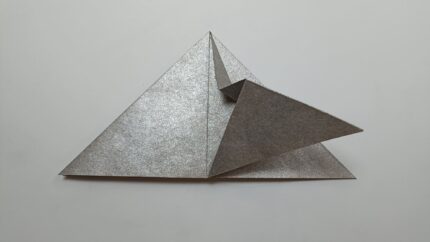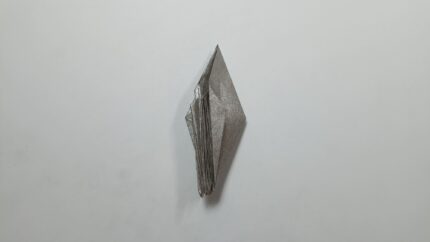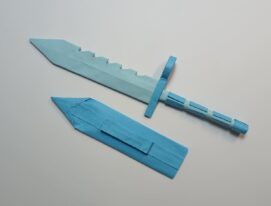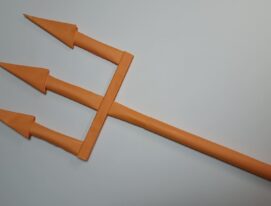Origami Hercules Beetle
If you want to see what the largest beetle on earth, which lives in tropical forests, looks like, then take a look! The Hercules beetle is a stunningly beautiful and surprisingly large insect. The size of the beetle reaches 17 centimeters. The color of the back depends on the environment and humidity. There are representatives of brown, yellowish-green, and gray colors. The giant feeds on fruits and is not dangerous to humans. When Hercules flies, a loud hum is heard.
You can try to master a new origami pattern and make a beetle. To help you with this, we offer a detailed description, photographs, and video tutorial. The craft will turn out very beautiful. Hercules, like any insect, has six legs, a small head, two large horns, and a back that resembles a shell. There will be a lot of bends and folds, so you need to choose good-quality paper so that it does not tear during the process.
Place the sheet of paper with the front side facing you. Mark the middle lines by connecting the sides and opening them back.
Open the folds of the diamond, and fold them like an accordion. The fold closest to the middle should be curved outward.
Turn the shape over from top to bottom. Bend the lower part of the fold inward and return it back with a slight indentation.
Pull the inner layers of the diamond outward, straightening the folds. Straighten the insect’s body, giving it the desired shape. Fold the outer edge inward.
Bend the back pair of legs towards the body. Bend the middle pair of legs in the center with a small accordion fold. Point the ends down. Bend the front pair of legs in the center with an accordion fold. Point the ends up. Give the flat parts of the legs a rounded shape.
Bend the parts of the horn protruding forward lengthwise, making a mountain fold. Make folds that direct the horns inward. The Hercules beetle is ready!
The Hercules beetle assembly diagram is complex and presents an exciting creative process. The result of the work is unique. The realistic figure recreates the insect’s distinctive features and details. It’s great to have such a copy in the collection!











































